
Two Guns, Arizona – One of the Deadliest Towns in the Wild West
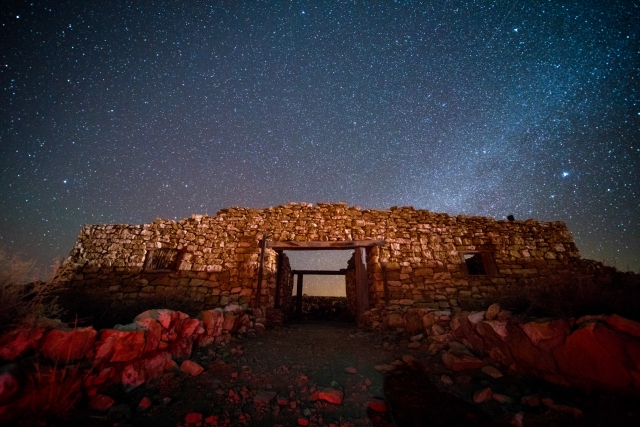
Two Guns, Arizona might just be the most fitting “Wild West” town I have ever visited. April of 2018 was my first time ever visiting Arizona, and this town was no doubt one of the most notable stops I made while there.
After days along Route 66 battling 20+ mph winds, they were finally starting to let up for us by the time we arrived in town. With a bit of wind still at our backs, we wandered the roads of Tow Guns, crossing a large, old stone and concrete bridge. This bridge connected the gap from one side of the canyon to the other, and lead us to the center of the village. The road through town is known as the National Trail Highway, and was the preferred route across Diablo Canyon by the 1920s as population continued to grow.
NOTE: Full photo gallery available at the bottom of this post
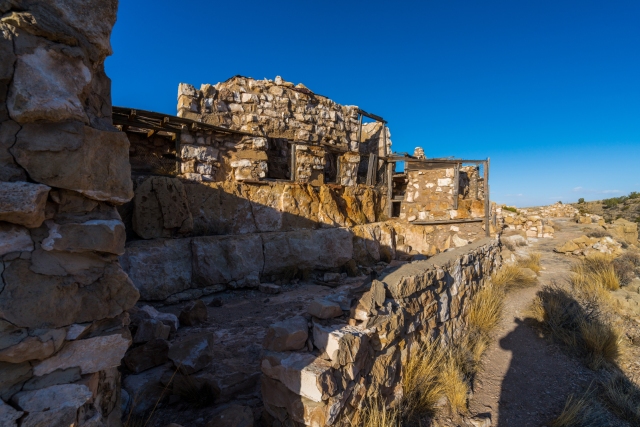
Long before the 20s though, Two Guns holds a rich, and wild history. Native artifacts dated between 1050 and 1600 AD have even been found in the town.
Initially, Two Guns operated as a trading post at the beginning of the 19th century, and was run by homesteaders Mr. and Mrs. Daniel B. Oldfield. More settlers began to populate the area through the mid-19th century, as the town offered an ideal crossover to Canyon Diablo.
In 1878, Two Guns became the site of a mass murder of Apaches by their enemies – the Navajo. In an attempt to hide out, and avoid detection, the Apaches crawled into a cave at Two Guns. Unfortunately, the Navajos took notice, and lit sagebrush fires at the cave’s exit, shooting any Apaches that attempted to escape. 42 other Apaches that were not shot were asphyxiated by smoke from the fire. They were then stripped of their valuables. The murder site became known as the “death cave.”

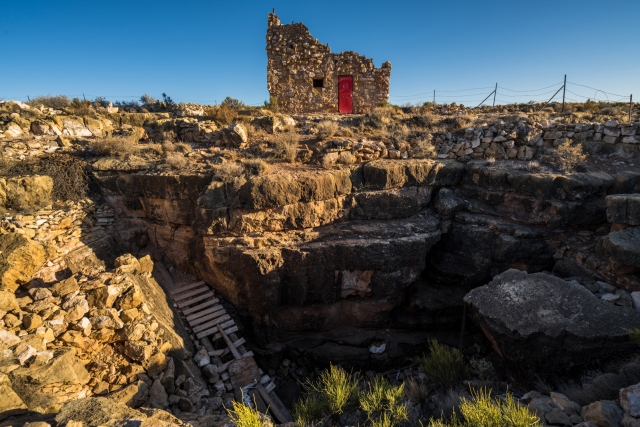
Billy the Kid even has some history with the town. During the winter of 1879-80, him and his outlaw gang turned ruins of a stone house into their hideout on the west rim of Canyon Diablo, directly across from Two Guns.
During the 1880s, the construction of the Santa Fe Railway progressed across northern Arizona. During its construction, a settlement was populated about 3 miles north of Two Guns. This settlement was named Canyon Diablo, after the nearby canyon. This settlement attracted drifters, gamblers and outlaws making their way through, and quickly became a wild, lawless town.
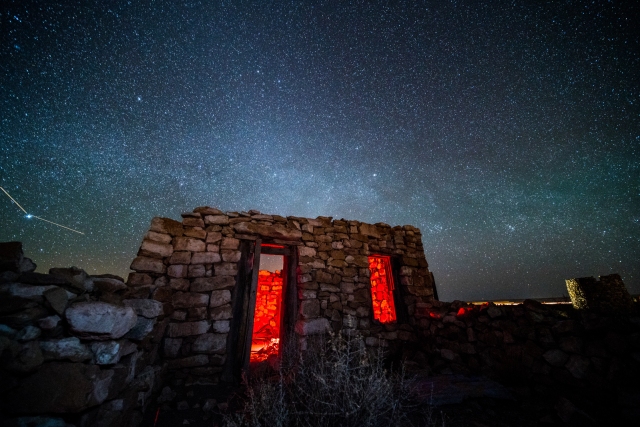
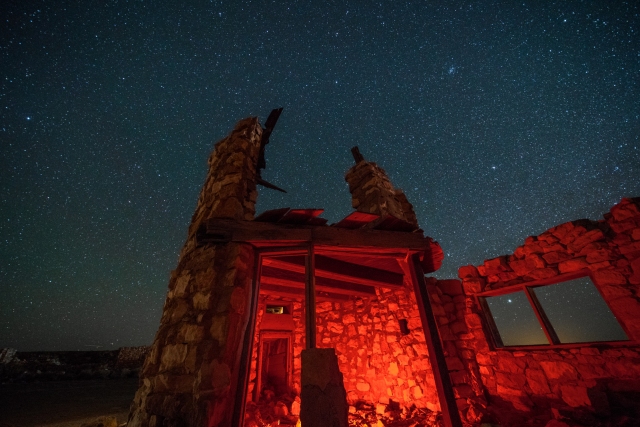
In 1889, four men robbed the train ay Canyon Diablo. The men were employees of the Hashknife Ranch. Successful in robbing the train, they then fled on horseback with $100,000 in currency, 2,500 new silver dollars, $40,000 in gold coins, silver watches, jewelry, and diamonds. Sheriff Buckey O’Neill and his posse caught up with the bandits, and were successful in apprehending them. Only $100 was recovered when the men were captured. Years later, after their release from prison, one thief informed a sheriff that the stolen goods, along with their rifles, were buried somewhere along the canyon’s rim near Two Guns. No other information was disclosed, and to this day, the area remains a popular destination for treasure hunters. Some argue that it was simply a case of a crooked sheriff, and the treasure was never buried at all. Others argue that the treasure has already been found, and the one who found it never spoke a word of it.
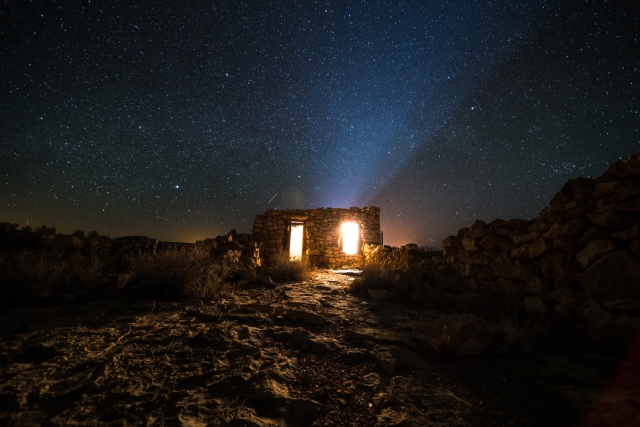
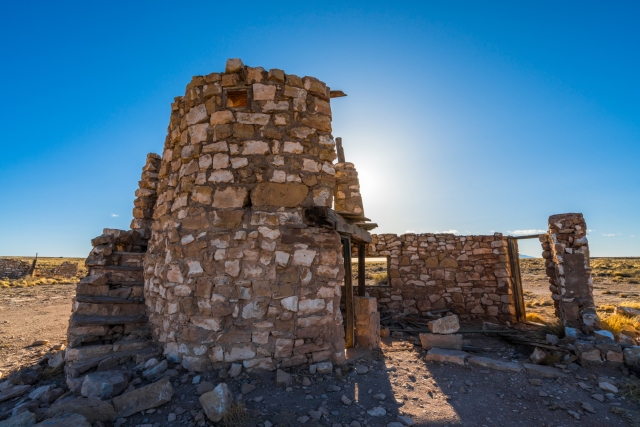
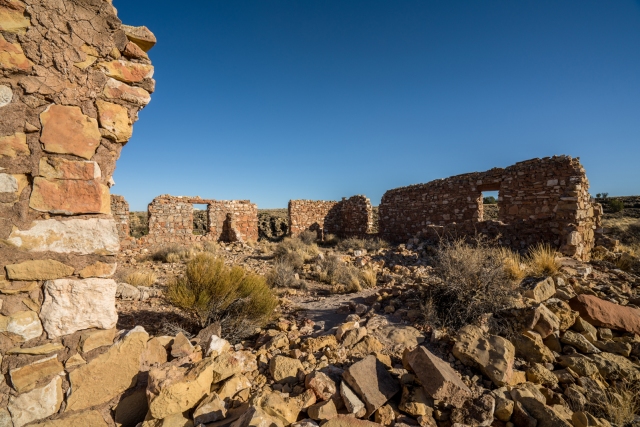
The first official settler at Two Guns was Ed Randolph. He built a store next to the death cave. In 1922, Earle and Louise Cundiff joined the picture, purchasing 320 acres of land from Ed. They then built a store, restaurant, and gasoline pumps on part of the 320 acres they had purchased. At that time, the 320 acres were acquired for only $1,000. In 1925, Harry E. Miller, a bit of an eccentric, leased property from the Cundiffs and began construction on some interesting things. He called himself “Chief Crazy Thunder” playing up the part for passing tourists. Along the canyon rim, Miller built a zoo with cages made of brick, mortar and chicken wire. As you’ll see in the accompanying photos, a lot of this remains to this day. Miller brought in mountain lions, cougars, gila monsters, coral snakes, birds and a lynx to display in his zoo. What a strange place for a zoo. Miller also opened a restaurant and Indian gift shop. He cleared the death cave of any remaining bones from Apaches, and sold their skulls as souvenirs for profit. I’d love to find one of the buyers of those!


The name “Two Guns” comes from Miller, who named his establishment “Fort Two Guns” as an homage to silent move actor William S. “Two Guns” Hart. Miller had really built the place up into quite the tourist destination, offering visitors a tour, which began at a Hopi house Miller had built. Rolls of colored piki bread were made and sold to the visitors. They were then led down a paved path along the canyon’s edge to a soft drink stand at the bottom. Visitors were then given a tour of the death cave, which had been decorated with fake ruins of cliff dwellers. Signs were placed all along the highway to promote “Fort Two Guns.”
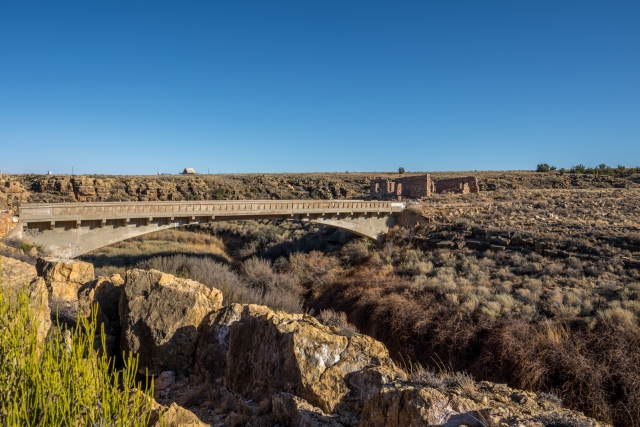


1926 was the year when the highway would officially become Route 66, and the same year Miller would shoot Earle Cundiff over a disagreement. Cundiff was unarmed when the two got into a heavy argument about the details of their lease. Miller shot and killed Cundiff.
Miller’s store caught fire in 1929, burning the inside. Years of further development took place however, when Louise Cundiff built her own tourist store. Miller then left the state only one year later. In 1934, Cundiff had remarried and opened the Two Guns Texaco service station. By the 1960s, a motel, western tavern, reptile exhibit, Shell service station, KOA campground, and new zoo were added to attract tourists now that more families were road tripping Route 66.
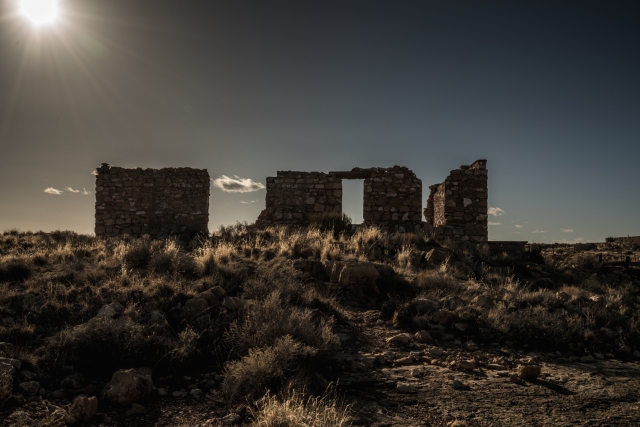
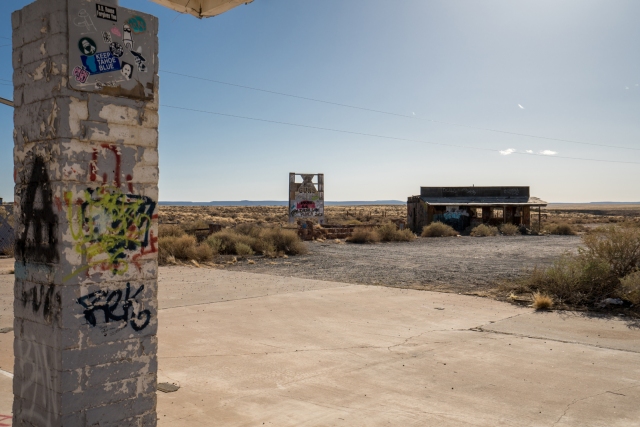
The service station burned in 1971, and Two Guns began to decline. By the 1980s, it was a ghost town.
For years now, the town has remained empty and quiet. We walked along the backside of the structures at the canyon’s edge, looking out over a glowing landscape. The sun was warm, and lit the structures beautifully, bringing out the detail and texture of each stone. It was still quite apparent where had held mountain lions, unless they just wanted to mess with people and put something else in there. I’m guessing someone wouldn’t do that though.


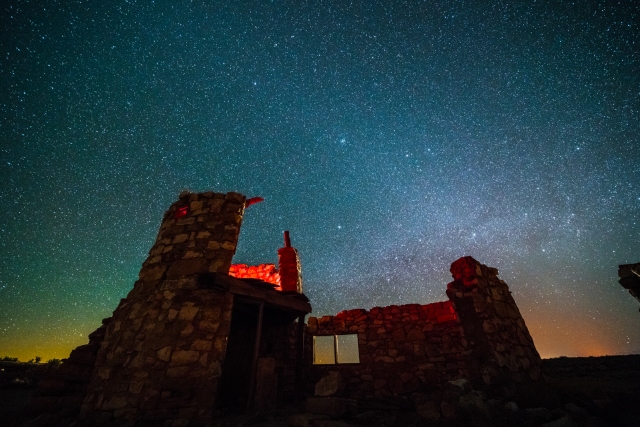
Very often, I’m asked what gear I use for my photography, videography, etc. Questions ranging from what type of camera/cameras I use, what lenses I use, backpacks, memory cards, even what type of laptop I recommend, or what type of introductory camera I recommend…all that stuff, and more!
Well, of course I love to recommend camera gear or adventure gear that I trust and love, so at the end of each post I create here on my blog, I like to give a bit of a run-down on gear I use almost all the time!
So here it is! My entire (or most of it) list of photography/editing/adventure gear that I use.
My Camera (Sony a7riii) – https://amzn.to/2AFtzQv
Alternative Camera – https://amzn.to/2VHjR9h
Theta 360 Camera – https://amzn.to/2CaRwzm
Sandisk Memory Cards – https://amzn.to/2SN5sX6
Sony 16-35 4.0 – https://amzn.to/2HgLFhN
Zeiss 55 1.8 – https://amzn.to/2SK4Dys
Zeiss 85 1.8 Batis – https://amzn.to/2SNRQLm
Laowa 12mm 2.8 Zero-D – https://amzn.to/2AESLXD
My Favorite Backpack – https://amzn.to/2RKTi44
Tripod 1 – https://amzn.to/2SKxxON
Tripod 2 – https://amzn.to/2M2gUM6
MSI Laptop (great for editing, & much more) – https://amzn.to/2shGfZn
My e-books – https://amzn.to/2Bumcwo
Hardcover books and prints available at – www.oddworldstudio.com
Full Photo Gallery:

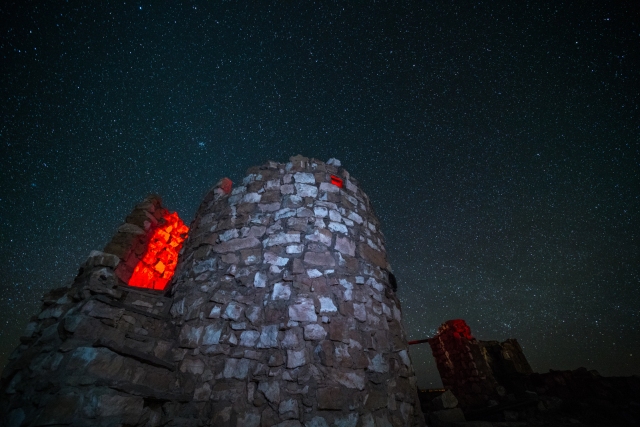


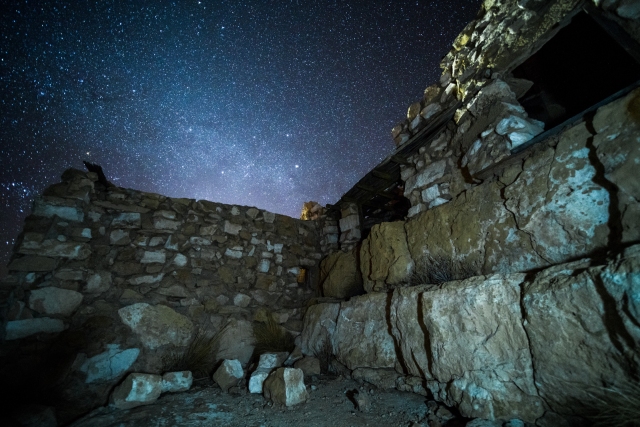



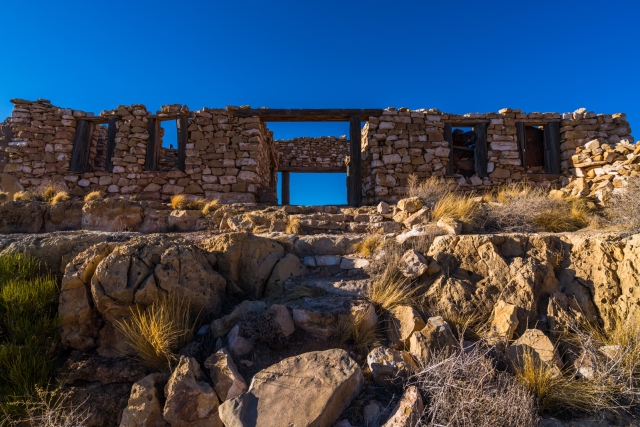
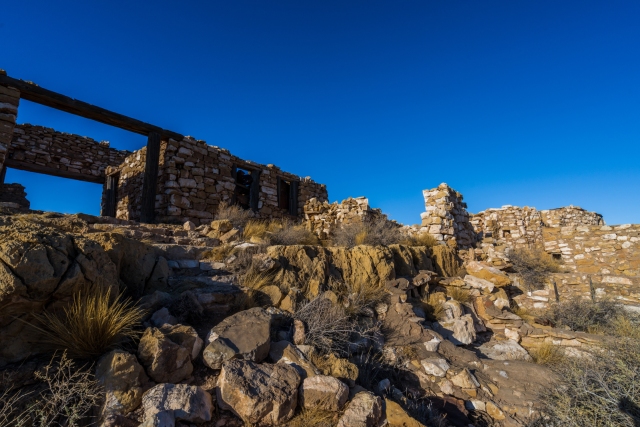
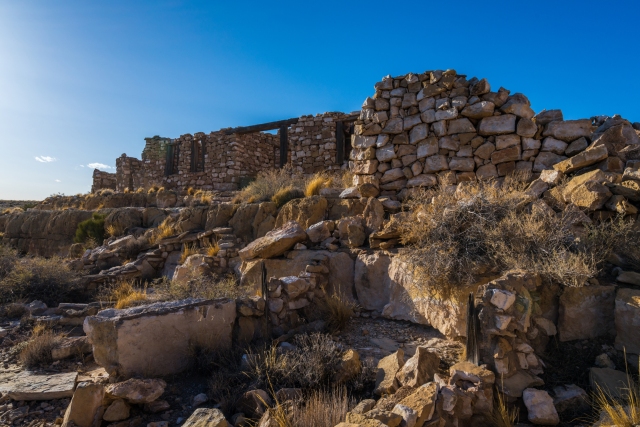


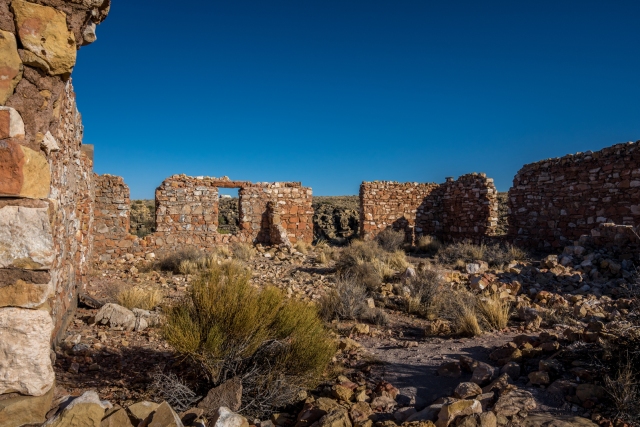








Fantastic post, Johnny. Gorgeous images, especially your incredible night shots. Paired with the history, it made for a very enjoyable post. Happy New Year!
Beautiful pictures…a desolate but beautiful area
So much history here! A post like this sparks more study.